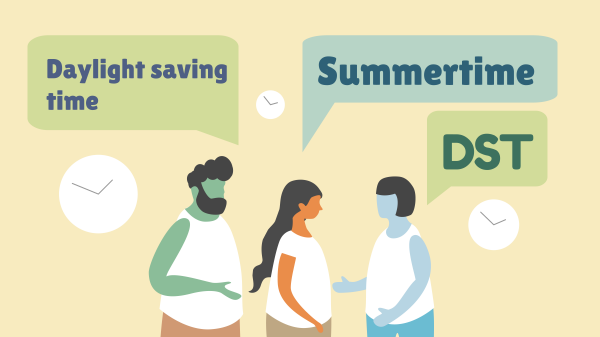Daylight Savings Time or Daylight Saving Time?
Daylight Saving Time (DST) is often wrongly referred to as “Daylight Savings,” with an “s” at the end. Other common variations are “Summer Time” and “Daylight-Saving Time.”

Daylight Savings Time is a misspelling but more common than the correct term.
©timeanddate.com
Setting our clocks one hour forward in the spring is often referred to as “Daylight Savings Time,” even though “Daylight Saving Time” is the correct spelling.
DST changes: Dates and local times
“Daylight Savings Time”
The terms “Daylight Savings Time” and “Daylight Savings” are commonly used, especially in Australia, Canada, and the United States. It's likely that the incorrect term “savings” entered the popular vocabulary because it's so often used in everyday contexts, like “savings account.”
Does DST Save Daylight?
At the beginning of the DST period in the spring, clocks are moved forward, usually by one hour. When DST ends in fall (autumn), clocks are turned back again. DST does not add daylight, but it gives more hours with light in the evening. In that sense, DST “saves” light, especially during early spring. Standard time refers to time without DST.
“Summer Time”
Another commonly used term for DST is “Summer Time.” In the United Kingdom, the DST time zone is called British Summer Time (BST). During standard time, Greenwich Mean Time (GMT) is used. It is sometimes referred to as “winter time.”
“Summer time” is used to name various bills about DST in the United Kingdom, including the Summer Time Act of 1916, the Summer Time Act of 1925, and the Summer Time Act of 1972.
The term “Sommerzeit” (summer time) is also used in Germany to describe DST. The term first emerged as early as 1916 when the German Federal Council decreed that “Sommerzeit” would be used in Germany as a wartime measure, starting on the last Sunday of April.